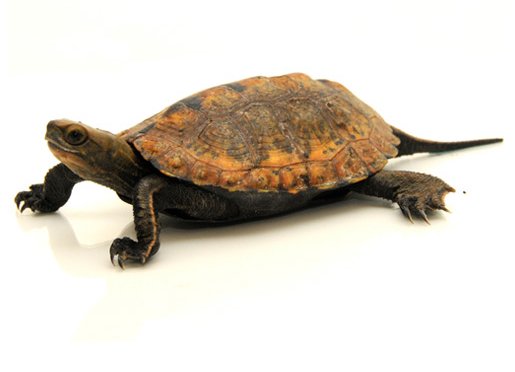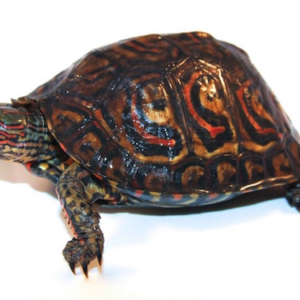Overview of the Japanese Pond Turtle
The Japanese pond turtle, scientifically known as Mauremys japonica, is a distinct species that belongs to the family Geoemydidae. This aquatic turtle is primarily native to Japan, with populations residing in various islands and regions, including Honshu, Shikoku, and Kyushu. Understanding the characteristics and habitat of this turtle is essential for conservation efforts and the appreciation of biodiversity in its natural environment.
Physically, the Japanese pond turtle is characterized by its moderate size, typically ranging from 20 to 30 centimeters in carapace length. The shell is often oblong and flat, featuring a smooth surface that typically displays shades of olive green to brown, sometimes adorned with occasional yellow or orange streaks. One of the most distinguishing features of this species is its unique patterning – the presence of distinct dark markings along the sides of the head and neck. Additionally, the turtle has webbed feet that support its aquatic lifestyle, allowing it to navigate effortlessly through its habitat.
Regarding habitat, the Japanese pond turtle thrives in freshwater environments such as ponds, marshes, and slow-moving streams. These turtles prefer locations with abundant aquatic vegetation, which serves as both cover from predators and a source of food. Optimal water quality is crucial for their survival; they favor habitats with clean water that maintains moderate temperatures, typically ranging from 15 to 25 degrees Celsius. As ectothermic animals, they are dependent on external environmental temperatures to regulate their body heat. Due to their widespread distribution across Japan, the turtles exhibit geographical behaviors that may include migratory patterns within their local habitats, particularly during breeding seasons and changes in environmental conditions.
Conservation and Care of the Japanese Pond Turtle
The Japanese pond turtle (Mauremys japonica) faces several threats that have contributed to its vulnerable conservation status. One of the primary concerns is habitat loss, driven largely by urban development, agricultural expansion, and changes in land use. As wetlands and riverbanks are modified or destroyed, the natural environments that these turtles rely upon become fragmented, making it challenging for them to find suitable breeding and feeding grounds. Additionally, pollution poses a significant risk, as contaminants can adversely affect their health and reproductive success. The introduction of invasive species adds another layer of vulnerability, as these non-native predators can outcompete the Japanese pond turtle for resources.
Recognizing these challenges, conservation efforts are underway to protect the populations of the Japanese pond turtle in the wild. Various organizations and local governments have initiated programs aimed at restoring and preserving their natural habitats. Habitat restoration projects include reforestation, wetland rehabilitation, and public awareness campaigns to encourage responsible land use practices. Moreover, breeding programs in captivity have been established to increase population numbers while also educating the public about the significance of preserving this species.
Caring for Japanese pond turtles in captivity necessitates a thoughtful approach to ensure their well-being. Owners should prioritize an appropriate habitat setup, which includes a spacious enclosure that mimics their natural environment, featuring a water area for swimming and a dry basking area. The water must be clean and well-filtered to prevent the buildup of harmful bacteria. In terms of diet, these turtles thrive on a variety of food sources, including commercial turtle pellets, leafy greens, and protein-rich offerings such as insects and fish. Monitoring their behavior and health is also crucial, as a stress-free environment with proper temperature regulation will aid in their overall well-being.





